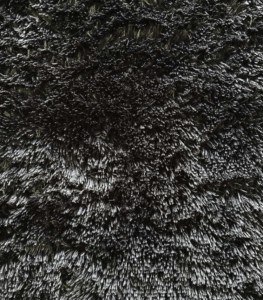I am always looking for a cheaper way to obtain high quality recordings on a DIY budget. From building circuits to sewing up dead cats.

It is no secret that wind can be one of the major obstacles when capturing field sound, especially when using sensitive microphones. Having a dead cat (aka a wind muff, wind jammer, or furry) at your disposable is mandatory. When I purchased my first shotgun mics (used) I was sure to look for package deals that came with an appropriate dead cat.
Later when I built my first Simple P48 capsule mics (EM 272z), I bought some simple fur covers that worked okay in most situations. Every once in a while I would get a gust of wind noise that made it through. I found that using a foam cover under the small furry helped, but heavy wind still won out.
Knowing that the wind protection on the shotgun mics dead acts was much more robust I decided to take a better look at what was inside and then turned to Google for some answers. Turns out most manufacturers use what is called an an “open cell foam” with a “acoustically transparent fur fabric”. Sounds high-tech, and expensive. I better dig deeper.

The dead cat parts are open cell foam and costume fur
Open Cell Foam:
First I searched for “open cell foam”. This was pretty easy to source. You can find different versions of open cell foam for sale as air filters, aquarium filters, etc. I saw online that 3M Filtrete Basic was stoked by Lowe’s and since I like to see things in person, I headed to my local Lowe’s to get a first hand look at this stuff.

It looks pretty darn close to the filter inside my Rode dead cat, and at a price of under $8 for a 20x30x it seemed like a great deal and a great place to start.
First I cut a 3.5 inch strip of the filter. Then I cut that down into 6 inch lengths (enough that I could wrap it around an XLR connector with overlap), and hand sew it together. Then I cut a small piece to fit into the top. This should be hand sewn in as well.
If you are building along, you should now have a small blue foam insert, or tube that fits snugly over an XLR cable.
Costume Fur Fabric:

I knew I needed a fur that was “acoustically transparent”. Having worked with fur in the past (to cover small amps and pedals), I knew most of the stuff has a thick, stiff backing that is no way “acoustically transparent”. Back to Google and few articles later I discovered that some “costume fur” has a breathability rating.
I headed to my local JoAnn to look at costume fur with a breathability rating and the staff looked at me like I was crazy. So I hunkered down and started to examine the different fur stock and found one that was almost perfect. It is like a fur that is woven to a mesh nylon. My only gripe (so far) with this product is that I wish the fur was longer. Anyway, I bought a yard for $11 and headed home to get the sewing machine setup.

The image to the right shows the nylon mesh-like “breathable” backing on the fur I selected. It also shows the simple way you can fold over the fabric and machine sew it into pockets for the blue foam insert. NOTE: This nylon mesh backing can get caught on the foot of your sewing machine, so be careful.
To assemble your dead cat, place the top of your blue foam insert on the top of the inside out fur pocket and roll it on. Any extra length of fur should be pushed into the hole that your XLR cable fits into. This will help make the fit even snugger.
For a couple of dollars and a little bit of time you can make any number of sizes of these dead cats. I am considering making a larger pair for my shotgun mics to do a side by side test with the Røde dead cats I already own, but I would really rather be outside using these smaller muffs on my DIY mics.
So how well does it work?
They work pretty darn good. I tested them with my DIY AOM 5024L mics and they certainly did a better job of wind protection than a small foam windscreen or nothing at all but I haven’t test them against a comparable commercial product yet. If you build some, let me know what you think!

